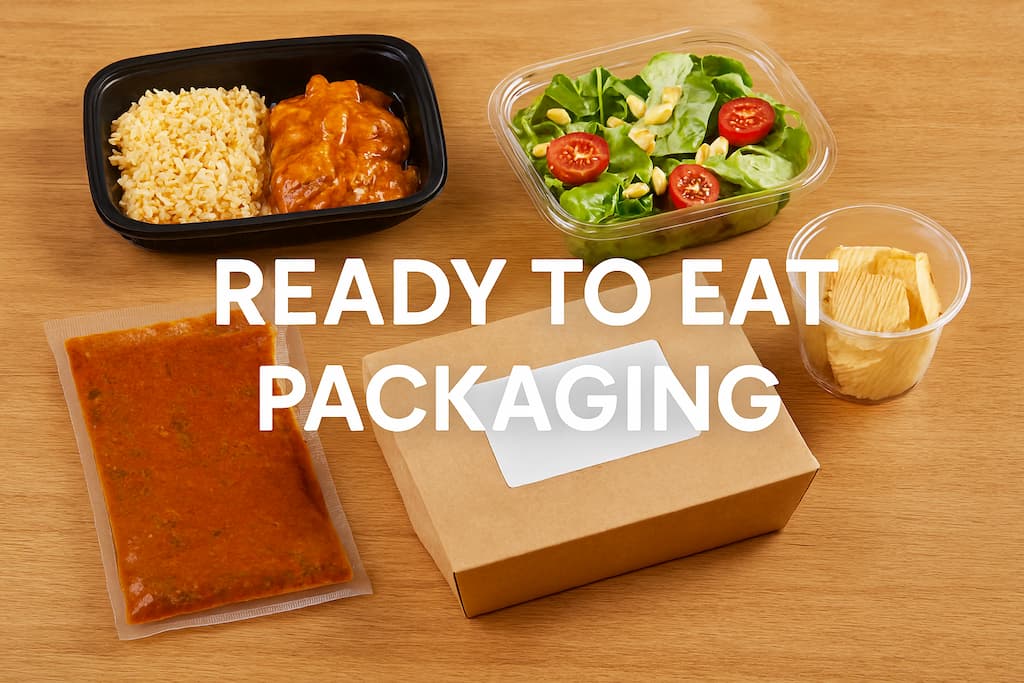In today’s fast-paced world, convenience is king—and nowhere is that more evident than in the food industry. As urban lifestyles grow busier and consumer expectations shift toward instant gratification, the demand for ready to eat packaging has skyrocketed. This packaging innovation isn’t just about wrapping food; it’s about preserving freshness, enhancing portability, and delivering meals that are as satisfying as they are swift.
Let’s dive into how ready to eat packaging is reshaping the way we consume food, the technologies driving it, and why it’s become a cornerstone of modern food solutions.
What Is Ready to Eat Packaging?
Ready to eat packaging refers to food containers designed to hold meals that require little to no preparation before consumption. These packages are engineered to maintain taste, texture, and safety while offering maximum convenience. Whether it’s a microwaveable tray of biryani or a chilled salad bowl, the packaging plays a crucial role in ensuring the food is appetizing and accessible.
This category includes:
- Heat-and-eat trays
- Vacuum-sealed pouches
- Modified atmosphere packaging (MAP)
- Resealable containers
- Compostable or recyclable wraps for sustainability
The goal? To make food consumption seamless—whether you’re at home, in the office, or on the move.
Why Ready to Eat Packaging Is Booming
Several factors are fueling the growth of ready to eat packaging:
1. Urbanization and Time Constraints
With more people living in cities and working long hours, cooking from scratch isn’t always feasible. Ready meals offer a quick fix without compromising on quality.
2. Rise of Single-Person Households
Smaller households mean smaller portions. Small food packaging tailored to individual servings is now a staple in supermarkets and delivery apps.
3. Health and Safety
Post-pandemic, consumers are more conscious about hygiene. Tamper-proof and sealed ready to eat food packaging solutions provide peace of mind.
4. Sustainability Demands
Eco-conscious consumers are pushing brands to adopt biodegradable and recyclable materials. Innovations in ready meal packaging now include compostable trays and plant-based films.
Smart Packaging: The Tech Behind the Trend
Modern ready to eat packaging isn’t just functional—it’s intelligent. Here’s how technology is elevating the experience:
- QR Codes & NFC Tags: Scan to see nutritional info, sourcing details, or reheating instructions.
- Temperature Indicators: Let consumers know if the product has been stored correctly.
- Self-heating Containers: Ideal for outdoor enthusiasts or military use—just activate and eat.
These features not only enhance usability but also build trust between brands and consumers.
Global Trends and Regional Innovations
From Tokyo’s vending machine sushi to Mumbai’s tiffin-style heat-and-eat curries, ready to eat packaging is adapting to local tastes and customs. In Europe, the focus is on organic and vegan ready meals, while in North America, high-protein and keto-friendly options dominate shelves.
India, in particular, has seen a surge in ready meal packaging tailored to regional cuisines—think masala dosa kits, paneer tikka bowls, and even gourmet thalis—all neatly packed and ready to go.
Small Food Packaging: Big Impact
Don’t underestimate the power of compact design. Small food packaging is revolutionizing snacking and portion control. It’s ideal for:
- School lunches
- Airline meals
- Fitness-focused diets
- On-the-go breakfasts
Brands are now experimenting with stackable containers, collapsible pouches, and dual-compartment trays to cater to this growing segment.
The Role of Ready to Eat Packaging in E-Commerce
With food delivery apps and online grocery platforms booming, ready to eat packaging has become a logistical asset. It ensures:
- Minimal spillage during transit
- Extended shelf life for warehouse storage
- Easy branding and labeling for digital visibility
In fact, many startups are using packaging as a storytelling tool—highlighting farm-to-table journeys, chef-curated menus, and sustainability pledges right on the box.
Sustainability and the Future
The future of ready to eat food packaging solutions lies in balancing convenience with conscience. Expect to see:
- Edible packaging made from seaweed or rice paper
- Smart compost bins that sync with packaging sensors
- AI-driven design optimization to reduce waste
As consumers become more eco-aware, brands that innovate responsibly will lead the pack.
Final Thoughts
Ready to eat packaging is more than a trend—it’s a transformation. It reflects how we live, what we value, and how technology can make everyday experiences better. From busy professionals to health-conscious snackers, the appeal is universal. And as packaging continues to evolve, it will shape not just how we eat, but how we connect with food itself.
So next time you grab a meal on the go, take a moment to appreciate the design, science, and strategy behind that humble container. It’s feeding more than just your hunger—it’s feeding a global movement.

 food packaging
food packaging
Comments are closed